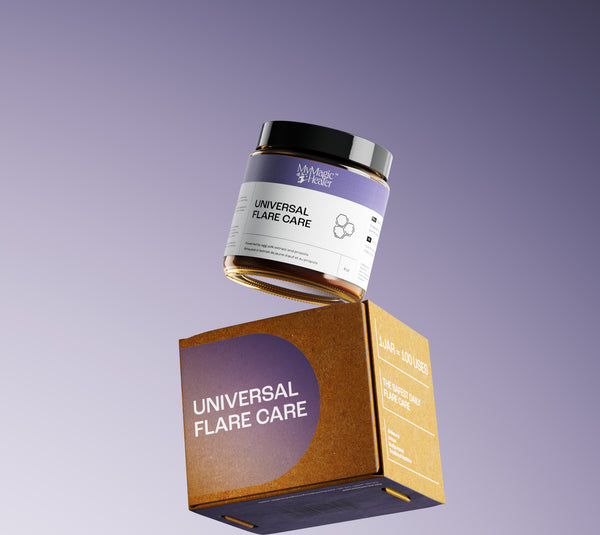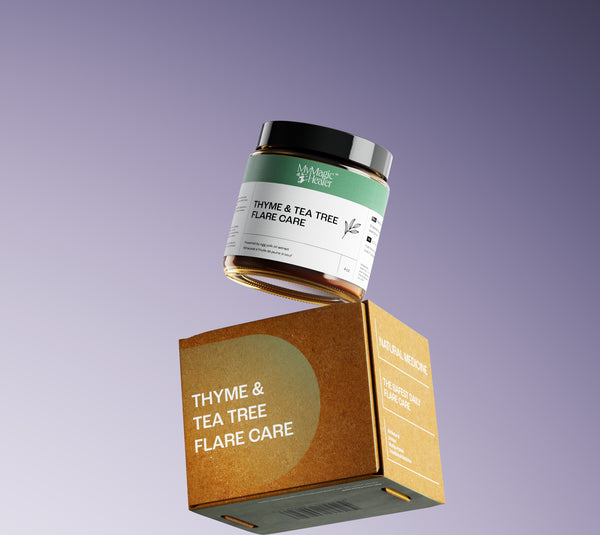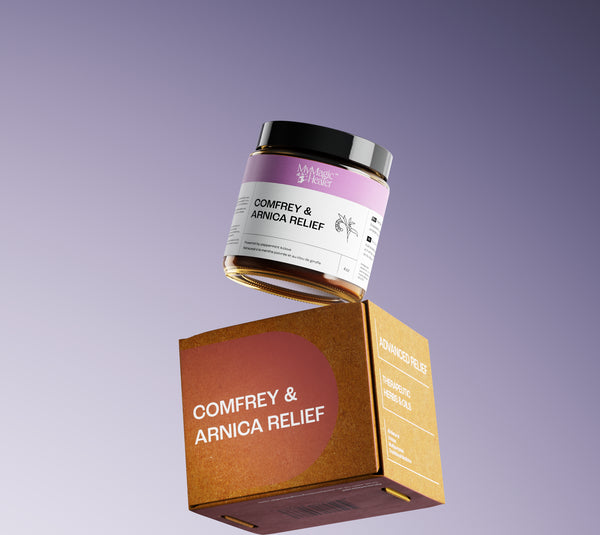Your Guide to Healing Pilonidal Cysts
Despite being extremely common, pilonidal cysts are one of those medical conditions that people experience but usually prefer not to discuss. Sometimes even with their doctor. In fact, nearly 70,000 cases are reported in the US each year, yet there are still thousands of cases that go untreated.
Pilonidal cysts almost always develop in the spinal crease that runs from the tailbone down the crack of the buttocks. They are treatable. And if you want to know how to treat pilonidal cysts yourself, keep reading!
Pilonidal Cyst VS Boil
These cysts are different than a boil in the way they form and in their contents. For example, pilonidal cysts contain mostly dead skin cells, hair, and other debris. An infection of the hair follicle that spreads to the skin's deeper layers is what causes boils.
Pilonidal Cyst Symptoms
Often, the first signs of pilonidal cysts are pain when sitting or lying down. This is a sign inflammation has already begun. This delicate region then forms a bump or "cyst" that, over time, may develop an infection and potentially begin to ooze pus.
Interestingly, the same anaerobic strands of bacteria can be found in both boils and pilonidal cysts— like staph bacteria.

Pilonidal Cyst Causes
The exact cause of pilonidal cyst formation is not well understood. We have a mixture of facts and theories to help us understand the complicated nature of this condition.
Theory: Ingrown hairs are commonly thought to cause pilonidal cysts, which occur when hairs grow under the skin. Wearing tight clothing, being overweight, and anything that can promote friction, sweat, or heat in the buttock region is thought to create the perfect environment for developing ingrown hairs. Other factors include sitting or exercising for a prolonged amount of time.
What we know: lab studies have found these cysts contain hair fragments, dead skin cells, and other debris. So, this theory is completely possible.
Pilonidal cysts also trigger an immunological response, giving rise to a different explanation.

Theory: laboratory studies have found the Epstein-Barr virus present in over half of pilonidal cyst specimens, which is a virus often associated with inflammatory conditions. It’s possible these cysts are caused by an immunological response.
What we know: When the immune system can’t beat a virus, it does something called “walling,” where it builds up a barrier around the area that contains the virus. This barrier can be made of many of the same materials found in cysts and even boils. So, it’s possible that these cysts are an immunological response to the Epstein-Barr virus. This could explain why Universal Flare Care works to drain inflammation, reducing the need for surgery. We will touch on that more in just a second.
For more information on the Epstein-Barr Virus, check out our friend the Medical Medium.
Pilonidal Cyst Treatment
Pilonidal cyst surgery is commonly thought to be the only way to eliminate these cysts, but that’s not true. If you can manage the bacteria and viral aspects of the wound, you may be able to avoid surgery.
Try these remedies first.
This solution is a real game changer. People have seen incredible results from using this salve to treat pilonidal cysts. Like this guy… check it out!
Universal Flare Care is unique because it contains special ingredients, like egg yolk extract, that pull out harmful microorganisms. Other ingredients in the salve then work to immediately relieve pain by soothing the inflammation and swelling around the site.
Most people see a noticeable difference in 24 - 48 hours.
Apply a generous amount and cover it with gauze or bandage. For best results, apply the salve both morning and night with clean bandages each time.
Other Natural Ways of Healing
There are a couple of other at-home techniques you can use to help speed up the healing process, too.
Warm Compress
Apply a warm compress. This can help draw bacteria and inflammation to the surface and out of the wound, which also helps relieve pain. They can be used up to four times a day.
To make a warm compress: Wet a clean washcloth with hot water and apply it to the surface of the cysts for 20 – 30 minutes. You can even set a hot water bottle or heating pad on top of a damp towel if you'd like. Just try not to let your skin get too hot.
Dead Sea Bath
Being that the Dead Sea is ten times saltier than any other sea, its salt is overflowing with minerals and has more pulling power, too. Dead Sea salt also hydrates and exfoliates the skin, allowing for the renewal of skin cells. Because of these exceptional therapeutic properties, this treatment has been used for centuries by various cultures to purify, detoxify, and rejuvenate the skin.
When purchasing dead sea salt, be sure you choose a quality brand with no fragrances that could irritate your cysts.
To Make: Add a 1/4 cup of Dead Sea salt into warm running bath water. Allow the Dead Sea salt to do its job while you soak for ten to twenty minutes. After thoroughly drying off, apply Universal Salve to the wound and cover it with a bandage.
So, now that you have some great at-home treatment ideas, remember that healing takes time, and not all bodies are the same. Be consistent and patient, and you will see results.











